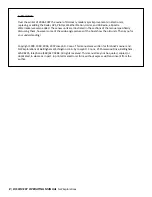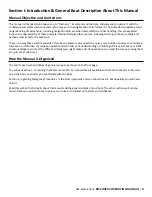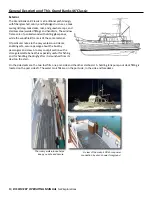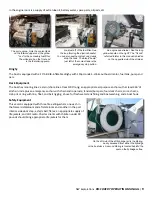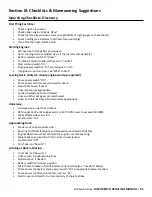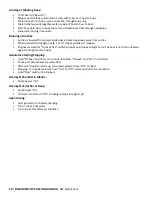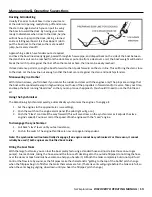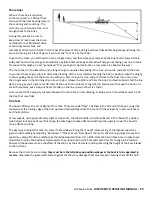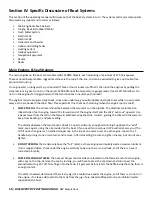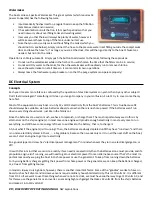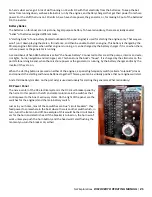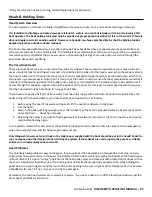
NW Explorations
DISCOVERY OPERATING MANUAL
|
13
Maneuvering & Operating Suggestions
Docking & Undocking
Usually it’s easier to dock bow in. Have your mate
at the side rail opening, ready to step off and secure
the stern line, against which you can pull to swing
the bow in toward the dock. By having your mate
ready to disembark when close to the dock, he/she
will not have to jump to the dock, risking a turned
ankle or falling overboard. It is the skipper’s job to
put the boat next to the dock so the mate needn’t
jump, but merely step off!
Approaching a dock, have fenders out as required
and have the bow line already rigged, passed through its hawse pipe, and draped back on the side of the boat between
the stanchions so it can be reached from the dock. Never put a line from a cleat over a rail: the boat’s weight will bend or
break the rail if it pulls against the line! When the mate’s ashore, the line can be easily reached!
If dock clearance permits, spring the boat forward so that it pulls forward on the stern line. This will bring the stern close
to the dock. Let the bow line out enough so that the boat can rest against the stern and midships fenders.
Maneuvering in a Harbor
With its twin screws, you’ll do best if you center the rudder and steer with the engines only! The props are so large that
the boat will respond well except in high winds just with use of the propellers in forward and/or reverse. Take your time,
and keep the boat running “dead slow” so that you can plan each approach. You shouldn’t need to use the throttles at
all.
Using the Synchronizer
The Glendinning Synchronizer exactly, automatically synchronizes the engines. To engage it:
1. Set the engines to the approximate cruise settings;
2. Push the switch on the engine alarm panel (the pilot light will go on);
3. Push the “Slave” control all the way forward (This will save stress on the synchronizer as it adjusts the slave
engine’s speed). You now control the speed of both engines with the “Lead” engine.
To disengage the synchronizer:
1. Pull back “slave” lever until you feel resistance;
2. Push in the switch. The engine throttles are now once again independent.
Note: The synchronizer will automatically disengage if an engine cannot be synchronized. For this reason, it cannot
reliably be used if both engines are throttled back to idle.
Filling the Fuel Tanks
With the large fuel tanks, you can fuel the boat pretty fast using a standard hose and nozzle (like those on auto gas
pumps). Fuel each tank, taking the hose around the fore-or-aft deck to get to the outside fill pipe (do not drag the hose
over the decks or teak handrails have someone help you handle it). Fill both the tanks completely but do not spill fuel!
Control the flow rate by sound, as the fill pipes make the characteristic “getting to the top of the bottle” pitch change
when the fill pipes begin to fill after the tanks themselves are full. (The tank vents will gurgle before the tanks are full, so
when the vents begin gurgling, slow down until you hear the fill pipes’ pitch change.)


